New Districts in Ladakh Bring Joy and Resentment: Celebrations in Zanskar and Drass, Protests in Sankoo and Shakar-Chiktan
By: Safina Qusar & Mohd Hassanain Ebadie
Elated by the announcement of granting five new districts in Ladakh, the Zanskar and Drass subdivisions resonated with chants of celebration. People danced joyfully at Jashn-e-Drass, a major celebration that saw participation from various political and religious leaders, setting aside religious, sectarian, and political differences. In contrast, a shutdown erupted in Sankoo, while Shakar-Chiktan expressed their displeasure over not being included in the list of new districts.
The atmosphere in Ladakh shifted following a post on the X platform by Union Home Minister Amit Shah on August 26, announcing that the Centre would create five new districts in the newly formed Union Territory of Ladakh. This announcement followed a call from the Apex Body and environmental activist Sonam Wangchuk to initiate a path yatra (march) from Ladakh to Delhi, demanding fulfillment of the four-point agenda for Ladakh: inclusion of Ladakh in the Sixth Schedule, granting statehood to Ladakh, separate Lok Sabha and Rajya Sabha seats for Leh and Kargil, and swift recruitment for gazetted posts in Ladakh.
* Click to Follow Voice of Ladakh on WhatsApp *
In a surprising turn, the announcement included Sham and Changthang as new districts, in addition to Zanskar, Nubra, and Drass, who had already been demanding district status for their respective regions. This decision will likely result in the existing Leh district being divided into four districts and Kargil into three, bringing the total number of districts in Ladakh to seven.
The decision was seen as a boon for the Zanskar and Drass regions, which had long been striving for district status. However, regions like Sankoo and Shakar Chiktan expressed dissatisfaction over being excluded from the list of new districts.
Expressing gratitude over the creation of five new districts, the District Congress Committee of Kargil stated in a press conference that Kargil had always demanded four districts within the region, but only two have been granted. Congress District President Nasir Hussain Munshi highlighted that district Kargil has a projected population of 167,800, while district Leh has 153,000. Thus, granting only two districts to Kargil out of the five is seen as an injustice. The committee also expressed concerns that the new districts should not function like those of the Union Territory but instead be full-fledged districts with complete administrative setups. The Congress Party demanded district status for Sankoo subdivision and Shakar-Chiktan to ensure proper governance in the region.
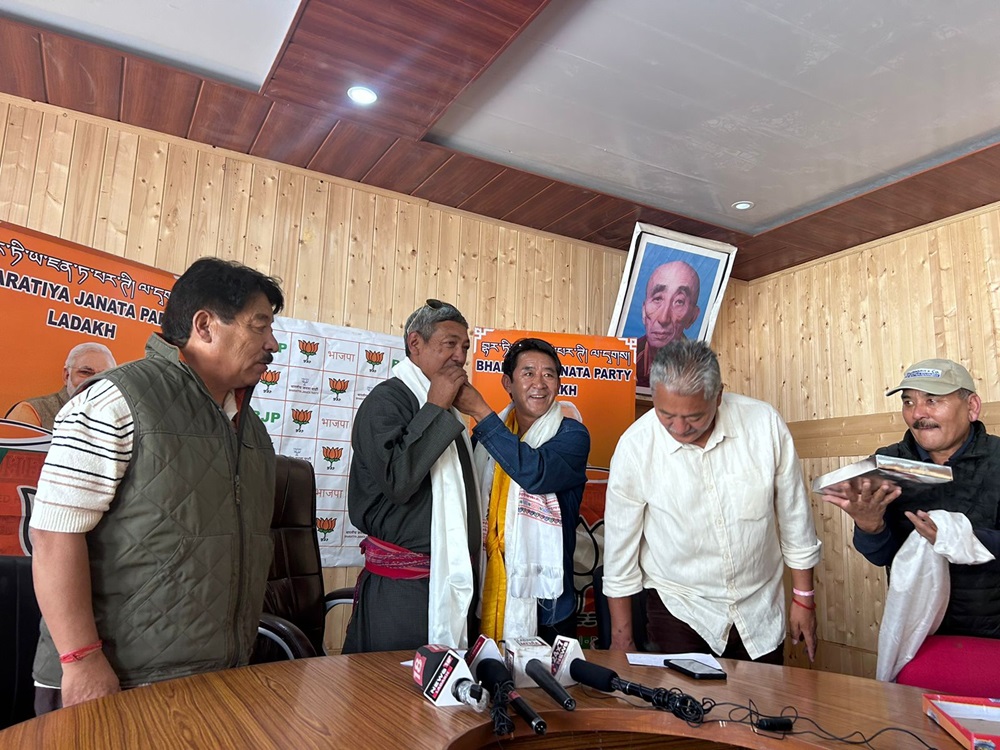
Meanwhile, celebrations began in Drass and Zanskar, initiated by local BJP units with several press conferences. The BJP unit of Zanskar, led by Stanzin Lakpa, held a press conference in Leh, followed by another from the BJP unit of Leh, expressing gratitude to the Modi government for fulfilling their long-standing demand. The BJP unit in Drass also hurriedly called a press conference to thank their party’s central and district leaders. People joyously celebrated this achievement and honored the Chief Patron of BJP Kargil, Fayyaz Ahmad Qari, with a traditional khatak.
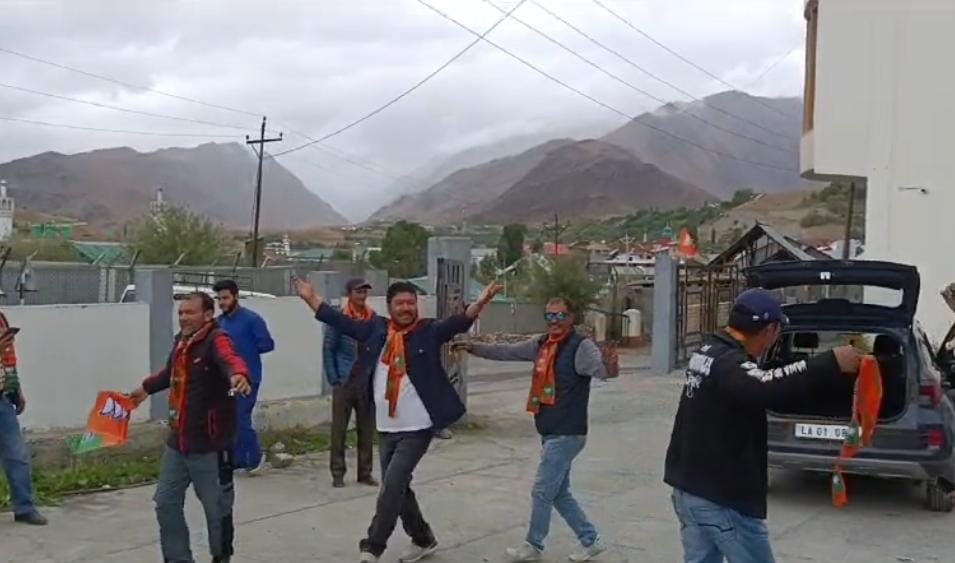
Congress Councillor from Ranbirpura, Abdul Samad, thanked Amit Shah, MP Ladakh, President of BJP United Kargil, and Chief Patron of BJP Kargil, Fayyaz Ahmad Qari, for addressing this long-pending demand. The celebration in Drass saw participation from various political and religious leaders, setting aside religious, factional, and political differences. The event was further highlighted by the visit of Lieutenant Governor of Ladakh, BD Mishra, where National Conference leader Ghulam Rasool Naqvi was seen chanting slogans in praise of the Prime Minister, Home Minister, and UT Administration for this historic decision.
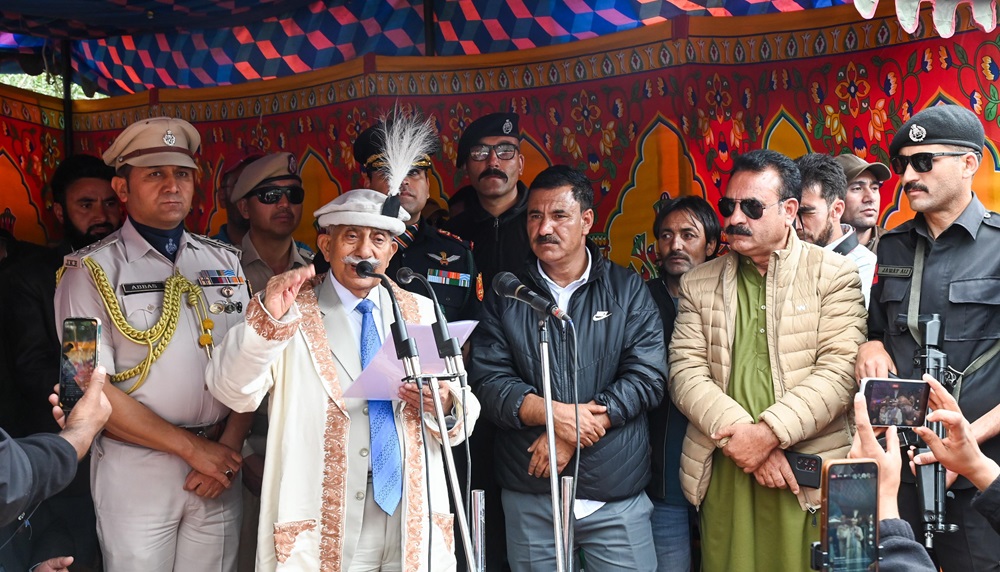
A special celebration was held in Drass the following day, attended by former Member of Parliament for Ladakh, Jamyang Tsering Namgyal, CEC Leh Tashi Gyalson, leaders from the National Conference and Congress, and sitting Councillors of Drass. People danced in celebration, recalling memories of Leh in 2019 when Ladakh was carved out as a new Union Territory, separating it from the erstwhile state of Jammu and Kashmir.
The President of the Ladakh Buddhist Association, Chering Dorjay Lakruk, who has also been at the forefront of the movement advocating for Ladakh’s four-point agenda, expressed his gratitude to the Central Government but cautioned the locals to remain vigilant. He emphasized that this decision would not deter them from their planned path yatra to Delhi. He noted that granting district status was justified for Ladakh, given its small population spread over a vast area that could not be effectively governed from just two district headquarters. Additionally, as Ladakh is already demanding statehood, creating a total of seven districts supports the case for it becoming a state.
Meanwhile, the District Congress Committee in Leh also welcomed the move during a press conference, while emphasizing that the new districts should be fully functional, not just nominal, by appointing a Superintendent of Police and a Deputy Commissioner. But it should be established with all necessary district departments. They also called for an increase in the Annual Budget to seven times the current amount to ensure these districts are meaningful and effective. Rigzin Jora stated that the recognition of seven districts in Ladakh by the Central Government validates the demand for statehood for Ladakh as justified and genuine.
However, he argued that the creation of new districts alone would not safeguard the environment, land, jobs, and other interests of Ladakh, and thus they would continue to fight for the demands of the Apex Body.
Executive Councillor of LAHDC Kargil and Councillor from Zanskar, Punchok Tashi, along with Congress leaders from the region, held a press conference to welcome the decision. Tashi announced that this would be his last address from Kargil as the district headquarters. He explained that Zanskar was included in Kargil district when Kargil was made a district in 1978. Since then, the people of Zanskar have been demanding either a separate district status or to be affiliated with Leh district, as they did not want to remain part of Kargil district.
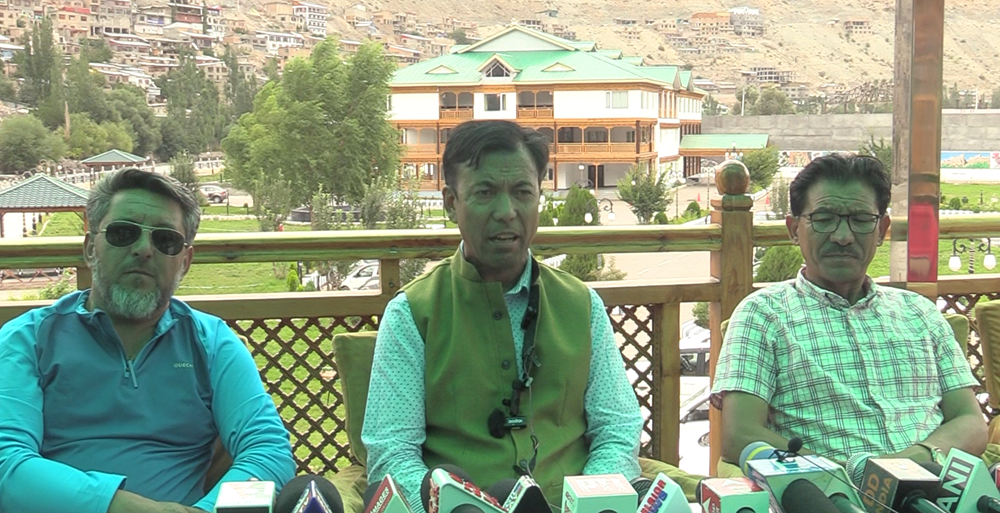
Tashi provided a brief history of the struggle by Zanskar leaders for district status, which began in 1978 and continues to this day, and paid tribute to all the leaders, activists, and student leaders who contributed to this movement. He noted that Zanskar is geographically connected to Himachal, Leh, and Kargil, and this decision has now separated the region from Kargil, giving Zanskar an opportunity to develop according to its own aspirations and choices.
Meanwhile, representatives from Shargole, Silmo, and Chiktan held a press conference to express their gratitude to the Central Government for creating five new districts. They stated that the people of Kargil had initially demanded four new districts within the region: Zanskar, Drass, Shakar-Chiktan, and Sankoo-Suru. However, they expressed disappointment that only two of these areas were granted district status.
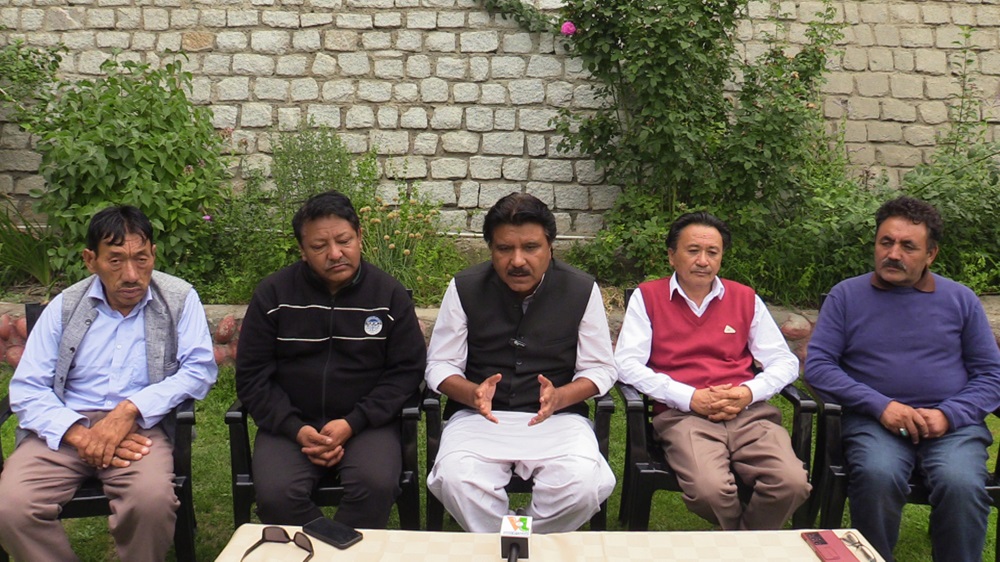
The press conference was attended by former CEC Feroz Ahmad Khan, Councillor Shakar Zakir Hussain, Councillor Pushkum Kacho Mohd Feroz, Councillor Shargole Mohd Jawad, and Councillor Chiktan Mohd Towha. Speaking at the event, Feroz Ahmad Khan mentioned that they had discussed the matter with the Hon’ble Lieutenant Governor and requested the creation of two additional districts. They also raised concerns about the demarcation of the district boundaries, emphasizing that it should not lead to imbalances along regional or religious lines. They urged the UT Administration to adopt a rational approach when defining district boundaries and demanded that all stakeholders be included in the decision-making process regarding the demarcation of these boundaries.
Meanwhile, there was resentment in Sankoo and Chiktan over being excluded from the list of new districts, as they had also been demanding district status. Leaders justified the case for Sankoo, citing its large population, which is among the highest in Ladakh, and the remoteness of areas like Parkachik, Itchu, Pangbar in Barsoo, and Umba.
Leaders from the Sankoo Subdivision, which extends from Parkachik to Kanoor, held various discussions about their exclusion from the list of new districts. In response, public representatives from the region formed a group called the United Movement for Sankoo District Status. This group held a press conference to express their discontent and successfully organized a shutdown of the Sankoo Subdivision to push for district status.
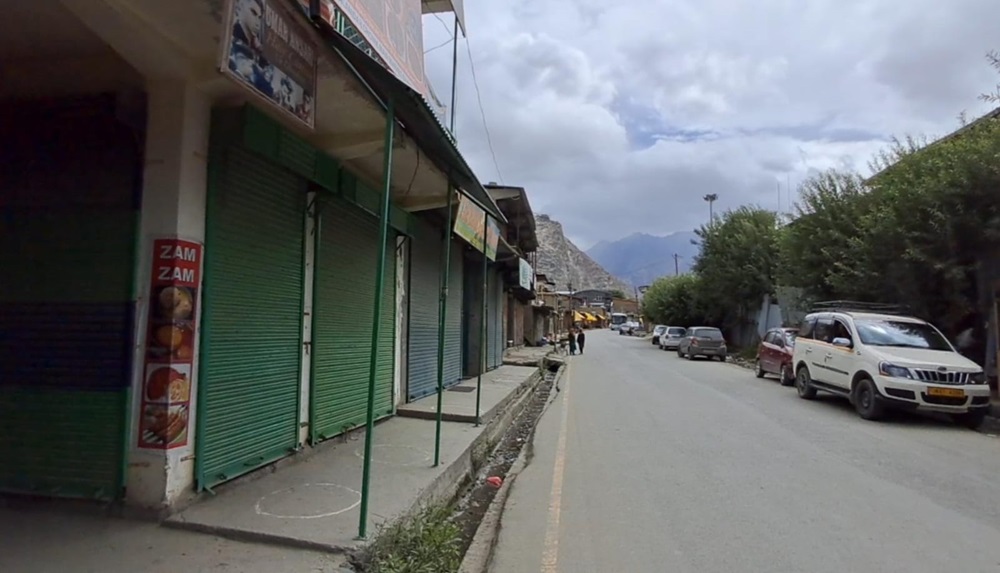
However, there has been no significant celebration in Nubra, Changthang, and Sham regions like that of Drass and Zanskar, suggesting that the people there are less pleased with this decision.
Recently, Imam Juma of the Imam Khomeini Memorial Trust, Kargil, Syed Mohd Mousavi Umba, advised people to remain calm and carefully consider both the pros and cons before celebrating. He stated that granting three districts to Leh and only two to Kargil is a clear injustice to the latter. He criticized those who were celebrating by dancing, warning that it could lead to a similar outcome as when Ladakh was granted Union Territory status. He reminded everyone that those who celebrated the UT formation later regretted it within a year. He emphasized that an injustice has been done to Kargil, and until more districts are created, Kargil will continue to fight for its rights and fair share.
2 Comments
Leave a Reply


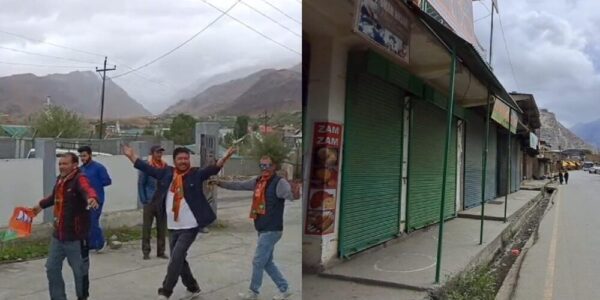
Jai Bharat.
Excellent initiative. The voice of evey part of the nation should come out and be heard. The best part of your article you tried to bring both aspects. However, instead of criticizing and warnings work on how you intent to outshine to get what’s right.
Jai Bharat
Divide and Rule, To minimize the Sonam efforts of 4 point agenda.